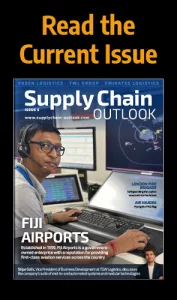We take a look at Jurong Port as a leading entity in Singapore’s shipping space, and speak to Mr. Ooi Boon Hoe, CEO, about the company’s plans for the future.
SINGAPORE’S SHIPPING TRANSITION
“The maritime industry remains extremely important to Singapore and its hub status, and in the face of the pandemic, supply chains cannot just be competitive and efficient, they also must become more resilient, and we see how supply chains are now being impacted, disrupted and re-organised. As the ports are critical nodes of these supply chains, it makes for a very exciting time to work with many different stakeholders to effect these changes within the industry.”
Since 1965, Jurong Port (JP) has successfully contributed to Singapore’s nation building journey with its world-class facilities and services. As a leading international multipurpose port operator handling general, bulk, and containerised cargo, JP, with its staff strength of almost 800 employees, embarked on a 10-year transformation plan in 2015 towards becoming a ‘Next Generation Multipurpose Port’; fully committed to being an efficient gateway, and value adding to the supply chains it serves through the development of port-centric ecosystems and digitalisation.
For Mr. Ooi Boon Hoe, CEO of the company and orator of the opening statement, JP exists as an entity operating within a critical sector.
“In the context of Singapore, there is only one main multipurpose port, and that is JP. That makes the work that we do unique and very important,” he explains. “And in terms of the value that we try to create for our port users and their supply chains, some of them are ground-breaking and first of its kind, such as the world’s largest common user cement facility, largest port-based solar farm and more.
“And at the centre of our operations there is a core focus on the safety of our employees across all levels. We have a systematic and robust strategy towards improving safety continually at our port, and we value every single person who dedicates themselves to keeping the port going. Our safety focus improvement includes the use of the latest technology and hazard analysis, as well as reviews, inspections and an increase in monitoring safety throughout to keep our people safe and happy.”
JURONG PORT TERMINALS AND LOCATIONS
Besides the main terminal ‘Homeport’, JP operates two oil terminals – Jurong Port Universal Terminal (JPUT) and Jurong Port Tank Terminals (JPTT), the Offshore Marine Centre (OMC), a multi-user waterfront facility providing port services to companies engaging in the fabrication of marine and offshore equipment, and two lighter terminals for harbour crafts to deliver spares and provisions to ships calling at Singapore. Regionally, JP has invested in three joint venture terminals: two in China – Rizhao in Shandong province and Yangpu on Hainan Island – and one in Indonesia – Marunda Centre Terminal in Bekasi, West Java.
PORT-CENTRIC ECOSYSTEM
Strategically located as the nexus for a number of different supply chains, JP’s development of port-centric ecosystems (PCEs) will allow for the brick-and-mortar clustering of critical nodes along supply chains around the port.
“One such ecosystem that commenced construction in September 2020 was the Ready-Mixed Concrete (RMC) ecosystem that comprises importation and storage of aggregates and conveyancing to RMC batching plants, which will be sited next to existing cement and steel supply chains in the port,” Boon Hoe says. “Over the next two to three years, JP will invest approximately S$200 million in its development.
“Once complete, this will be the world’s first common-user facility handling approximately six million tonnes of aggregates discharged in western Singapore, gradually transiting to be discharged at JP’s RMC ecosystem. By doing so, JP will be able to contribute to its sustainability efforts by reducing more than 600,000 truck trips from our roads annually.”
In addition to increased efficiency and sustainability, aggregates can be conveyed directly from JP’s berths to a fully enclosed storage and RMC batching facilities. Coupled with JP’s existing port infrastructure and deep-water berths, JP can attract larger bulk vessels transporting aggregates from distant sources with its direct discharge capability.
In the long term, this will be a game-changer and ensure competitive and sustainable cargo handling, encourage source diversification and strengthen supply chain resilience for the company.
Can you tell us about the world’s first green berths and the importance of sustainability initiatives to Jurong Port?
Mr. Ooi Boon Hoe, CEO: “In 2016, JP completed the upgrading of two berths using recycled concrete from existing berths and yards. JP was subsequently awarded the Green Mark (Gold) Award from the Building and Construction Authority.
“The berths may be small compared to the entire port, but in 2016 we sent a clear signal of commitment and dedication towards the sustainability cause because we believe that as Singapore’s primary gateway port, JP is able to communicate and strengthen the green agenda by example. Fast forward to 2021, we continue to forge ahead with our commitment with the three strategic sustainability initiatives of environmental stewardship, sustainability through PCEs, and facilitating the zero-carbon energy transition in the years ahead.”
AN AIM FOR 2025
Moving forward into the decade, Jurong Port has plans to become a next-generation multipurpose port by 2025; an aim that hinges on four key strategic driving factors: the continued development of the aforementioned PCEs, increased digitalisation across operations, environmental sustainability, and organisational excellence.
“Our PCE developments are in the three main industry verticals of construction, energy, and anchorage,” Boon Hoe elaborates. “Notable highlights are the commencement of the RMC ecosystem development, and the preparations for the steel ecosystem with the numerous digitalisation initiatives at the wharf side. In terms of the energy vertical, the commencement of phase one operations for JPTT, and the current construction of JPTT phase two, as well as the stake acquisition and operation of JPUT are the key milestones.
“We have also formulated our Environmental Sustainability plans and target to halve our scope one and two carbon emissions from our 2005 BAU baseline by 2030 and aspire to be carbon neutral by 2050. We will always continue to place emphasis on JP’s safety transformation and continuous improvement culture building with our people. The outcome as we gain more traction in our transformation journey will see the following attributes of our port shaping up – smart and connected; digital and business friendly; safe, secure, and sustainable into the future.”






















